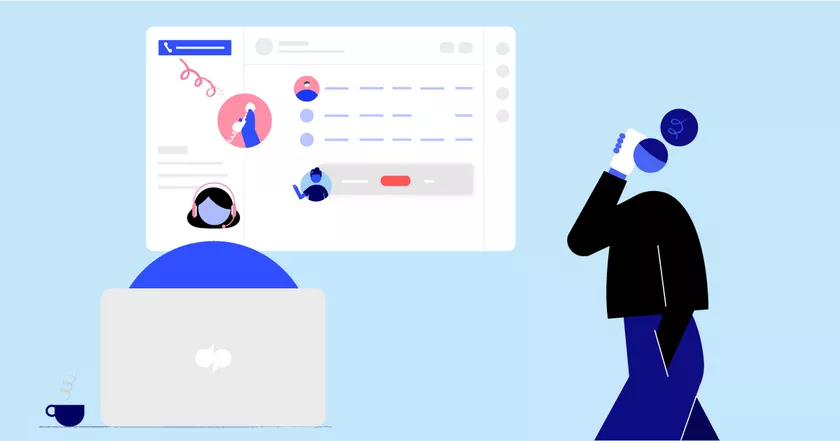
January 28, 2021
“Can I put you on hold?” We’ve all heard this while calling a support center. Whether it's one minute or one hour, being put on hold can be a frustrating experience. But how do hold times affect overall customer satisfaction? Let's let our data do the talking and see how any business can improve their customer experience.
1. Longer hold times = lower CSAT score
It’s no surprise that the longer a customer waits, the less satisfied they will be. What is surprising is how quickly customer satisfaction can drop after being placed on hold. We compared the CSAT score for hold times of varying lengths by drawing anonymized data from 130,000 customer calls across 120 companies.
The data shows that total hold times under three minutes don’t affect CSAT scores, but anything longer than three minutes translates to a drop in customer satisfaction:
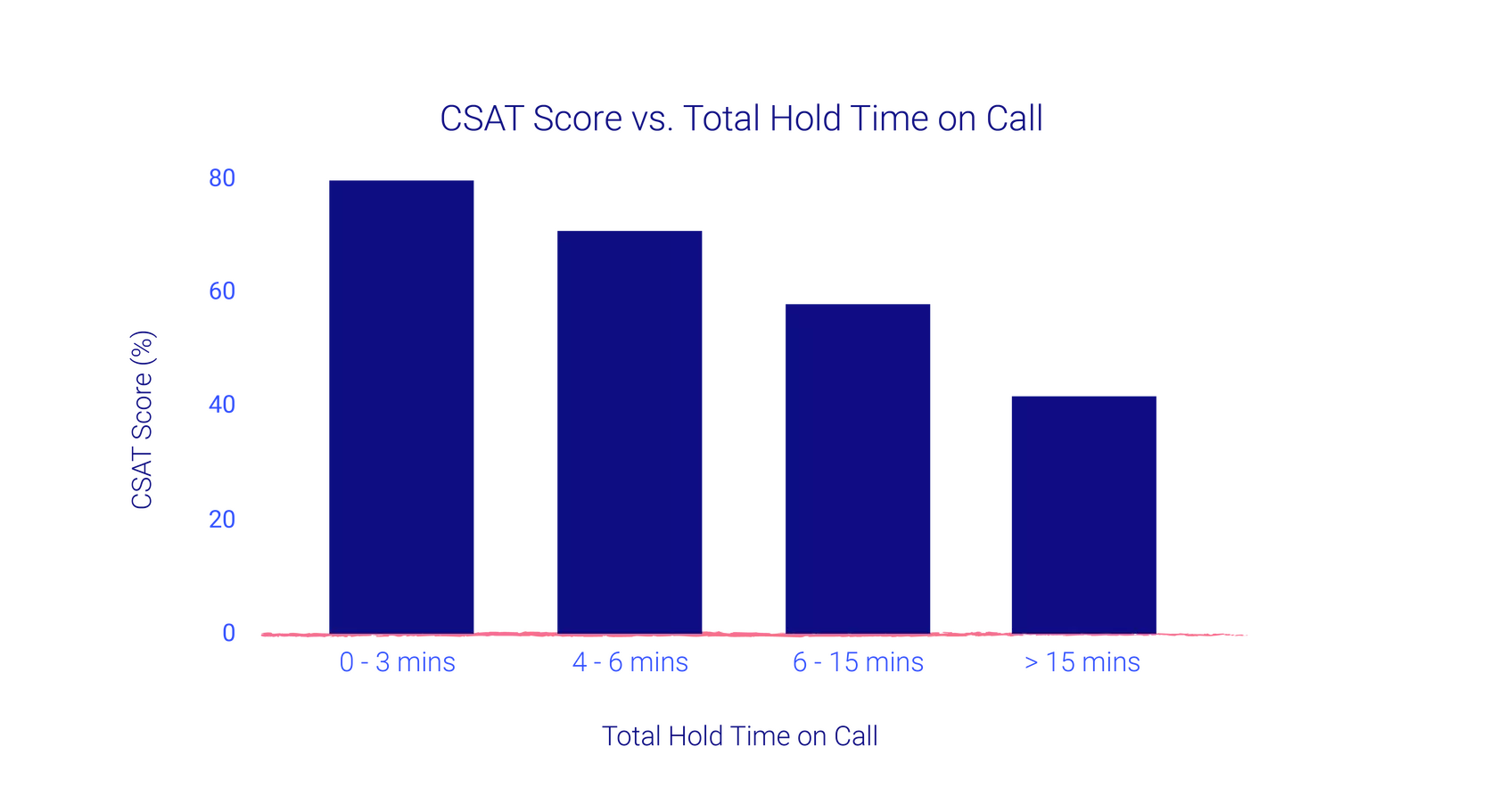
2. Break up hold times to improve CSAT scores
Hold times may always be a reality with call centers. So, as a manager, what processes can you put in place to improve CSAT scores? One actionable variable we looked at next is how hold times are broken up. Sure, agents will always need some time to look up answers, but how often and when they check in with the customer is largely within their control. In this analysis, we compared the CSAT score for two sets of calls: those with a single long hold and those with multiple holds. To keep the comparison fair, we compared them based on the total hold time in the call.
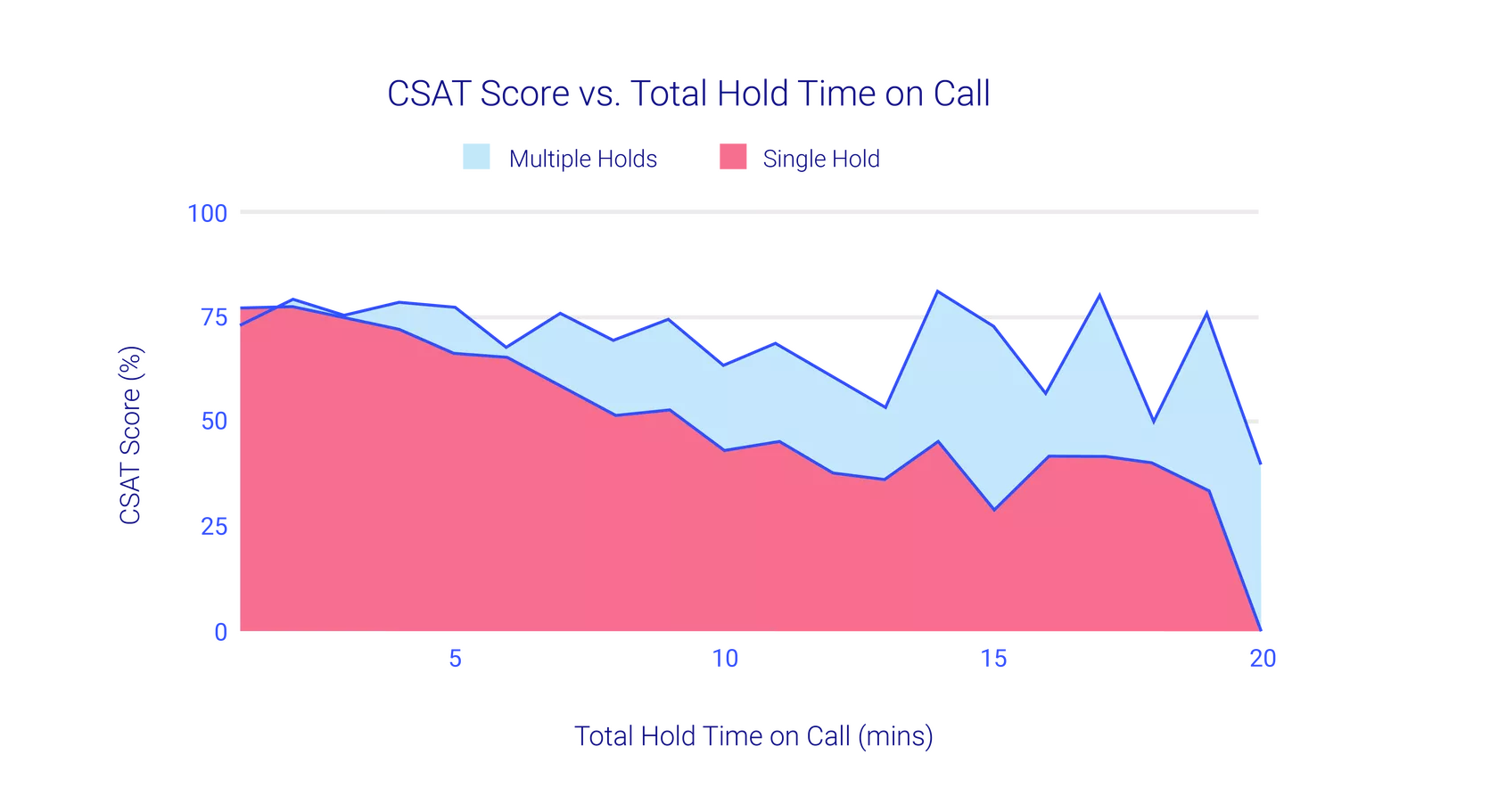
Our conclusion? Breaking up hold times and frequent agent check-ins actually prevents most of the negative impact on CSAT scores. As soon as single holds get past the 3-minute mark, it’s better for CSAT scores to break them up. But why? When agents check in, it communicates to the customer that progress is being made and the agent hasn’t forgotten about them.
This is why Dialpad Ai's call center dashboard tracks the metric % of calls with hold times of 3 minutes or less. If you’d like to track this metric as well, reach out to your customer success manager and they’ll set you up. For an easy way to measure customer satisfaction, Dialpad Pro and Enterprise plans now include CSAT surveys. Learn more about other customer satisfaction metrics.
3. Don’t say “hold on a few seconds” unless you mean it
Does the language used by the agent before placing a customer on hold matter? It turns out it really does, and it impacts CSAT. This is where Dialpad Ai comes in handy. Embedded in every conversation, Dialpad Ai extracts insights and data from every conversation. In this case, Dialpad Ai examined the agent’s phrasing to set the customer’s expectations about how long the hold will last. We grouped agent phrases into three categories depending on the words agents used to describe the expected hold time: 1. Seconds, 2. A Minute, and 3. Minutes.
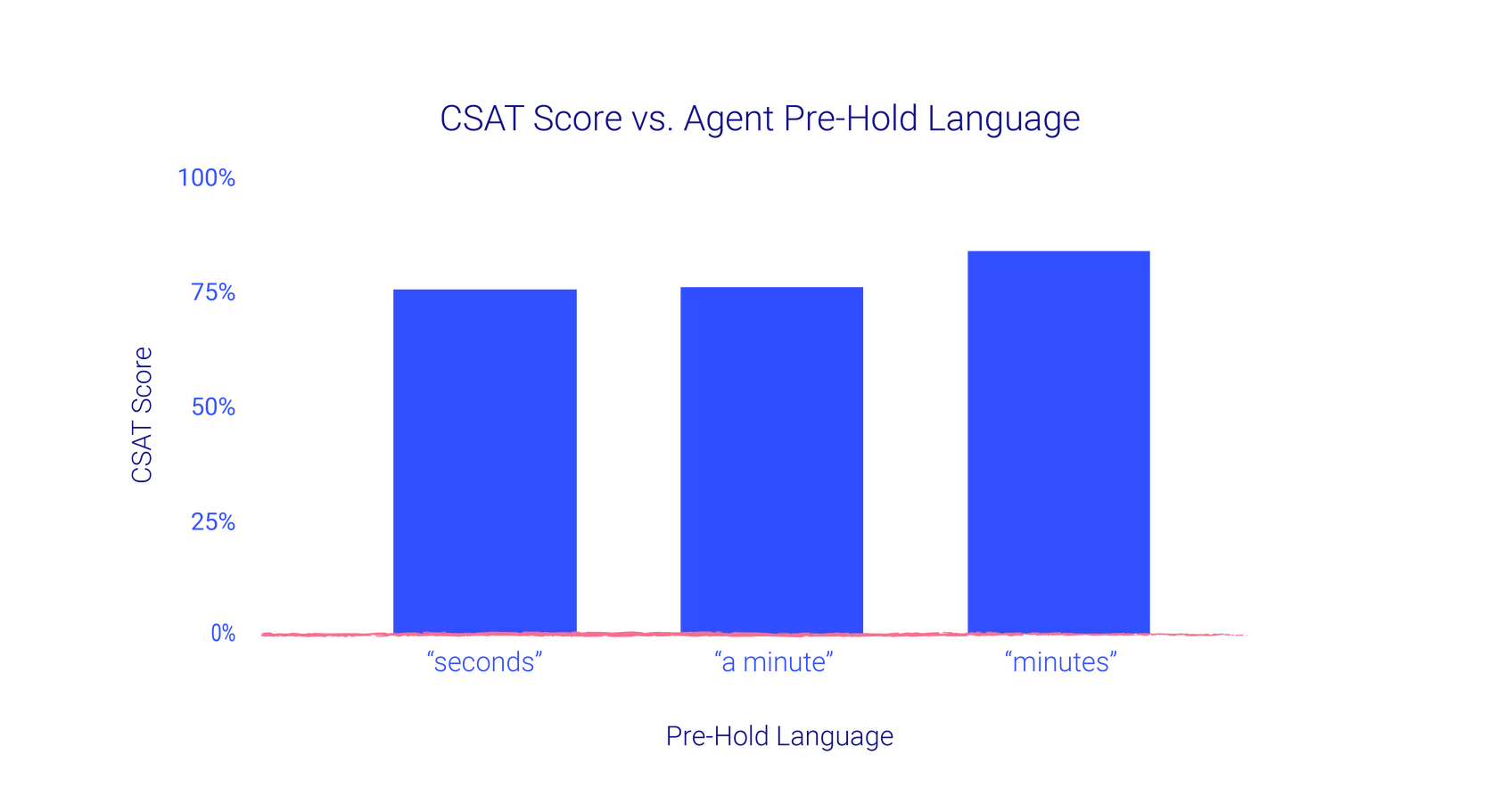
We found that the “minutes” category had significantly better CSAT scores than the other two. But why?
Looking at the average hold times for each category gives us a clue:
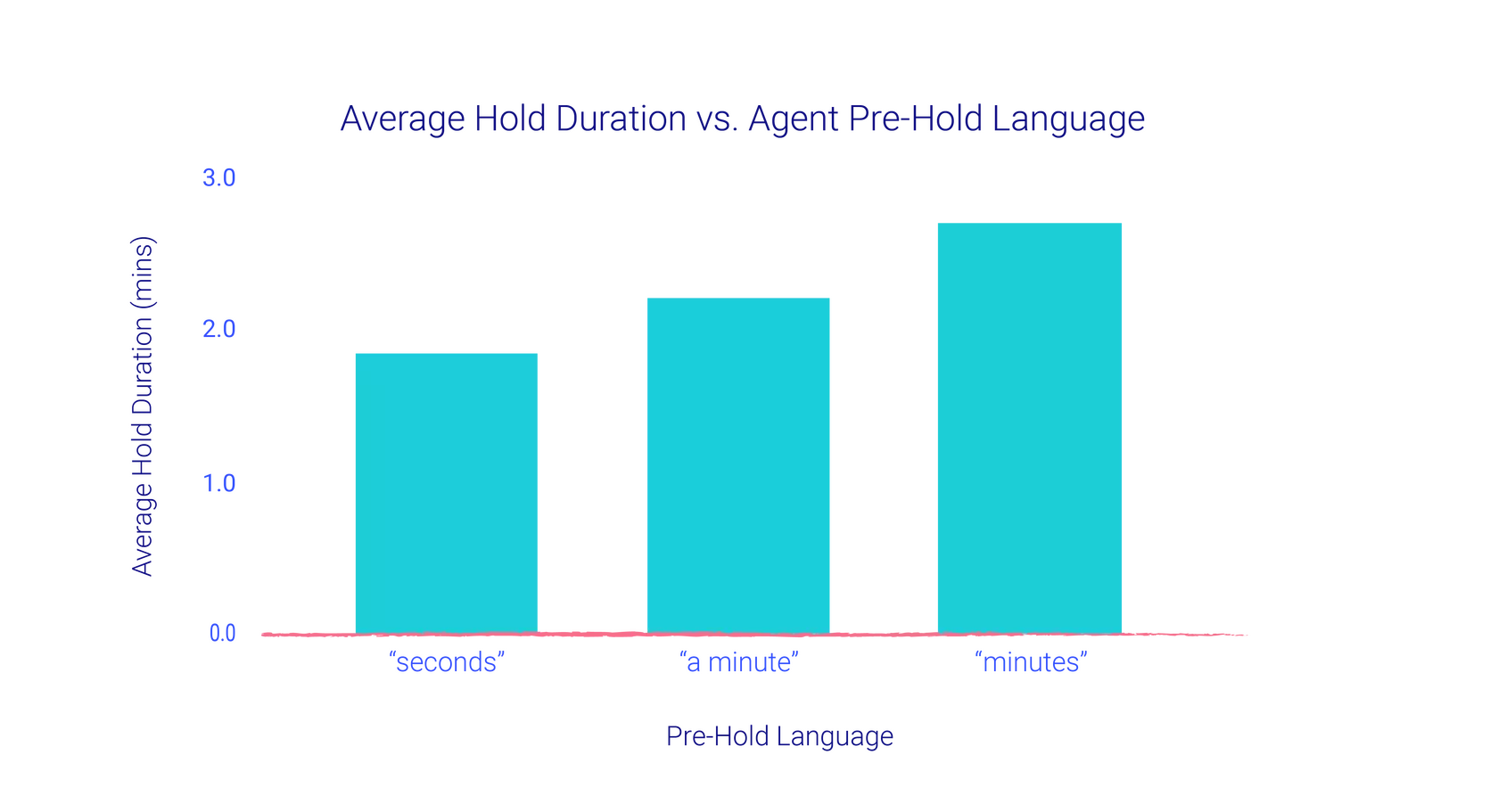
When agents say the holds are going to last “seconds” or “a minute,” typically they are setting inaccurate expectations with the customer. For example, the average hold time when the agent says “seconds” is 1 minute, 50 seconds. No wonder the customers get impatient!
What’s more, this isn’t fringe behavior for agents—it’s actually the most common, with 75% of interactions using the word “seconds” in the pre-hold language. And only 10% of hold interactions used the more accurate term “minutes,” which produces better CSAT scores.
This presents an opportunity for contact center managers to improve the CSAT in their call center by training their agents to use the right language around hold times—language that correctly sets customer expectations. Agents shouldn’t be afraid to tell customers to hold a few minutes when needed. Customers gave the highest CSAT ratings when this happened even though they had to wait the longest time on average.
To see how your agents are responding to your training, try creating a Custom Moment to track keyphrases like “hold on a second,” “place you on hold for a second,” etc. To set these up, check out our Help Center. See how many calls this Custom Moment triggers through your Analytics. Similarly, try coaching your agents live on the call by creating a Real-time Assist Card and remind them to clarify with the customer how long they expect the hold time to be. You can’t be everywhere, but Dialpad Ai can help your team on every call.
To summarize, keeping hold times short with frequent check-ins while being upfront with hold time duration can have a drastic improvement to your contact center’s CSAT score. Learn more about call center optimization.






